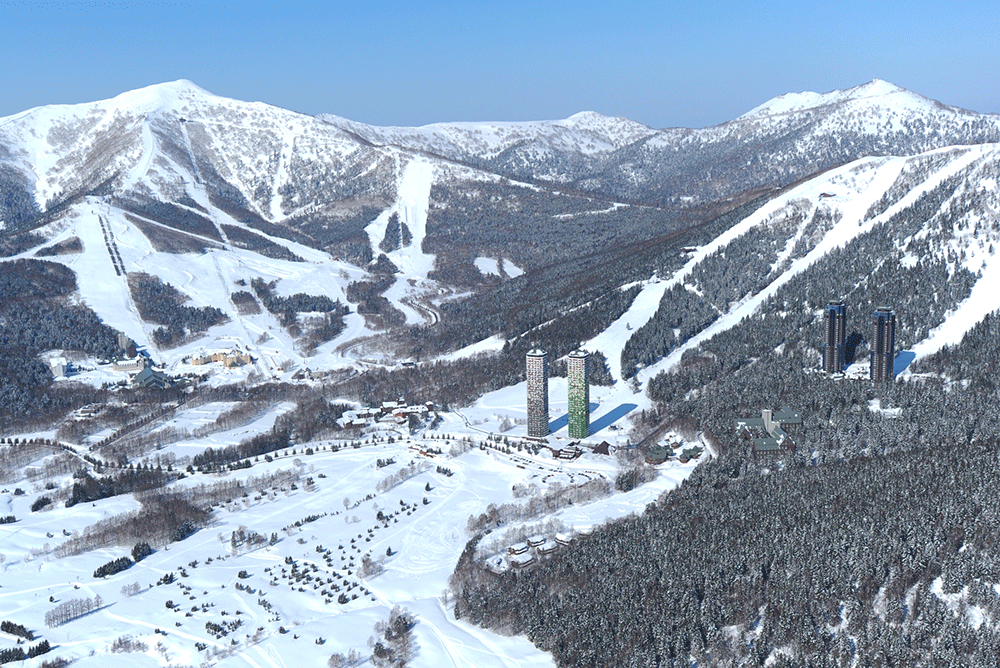Hoshino Resorts Tomamu consists of two mountains, "Tomamu Mountain" that spreads out on Mt. Tomamu with an altitude of 1,239m and "Tower Mountain" on the east side, and a total of 29 courses are developed in a vast field. In order to freely ski in the untouched nature of Hokkaido, the "Winter Mountain Liberation Declaration" has been set up, and the "advanced skiers only open area" where you can enjoy the terrain such as tree runs and powder as it is within the resort.
In fact, in 2012, a unique research project was conducted at Hoshino Resorts Tomamu. Nobuhiko Yoshimura, a former Hokkaido University Graduate School of Environmental Science coordinator, is a researcher of forest management and map information utilization. I would like to introduce what the aim of Mr. Yoshimura's research was, what he learned from it, and what the results led to.
Aim of research
The research that Mr. Yoshimura conducted was, simply put, by attaching GPS to users and snow groomers, collecting the sliding log data, and analyzing the results.
What made you want to start this research?
“I wondered if there was a forest thinning that would be interesting for skiers and snowboarders in Tomamu resorts. That was the idea of my research. I thought that it would be stronger to have empirical data that would make it
more fun.Actually, my strong motivation was that I wanted to do a more fun tree run! I thought it would be nice if I could discover places with latent possibilities that I hadn't noticed."
Mr. Yoshimura, who says, is actually a core snowboarder who skis 100 days a year.
These are the three goals set by the research and what we worked on. What was necessary to approach these was the sliding log.
[Three initiatives]
Compressed snow : creating a method that improves both attractiveness and energy saving (compressed snow location x user's skiing trajectory)
Map : expanding the range of attractiveness with information (current information provision x user's skiing trajectory and hearing results)
Forest Management : Proposing a forest management method for the skiing area (tree density x user's skiing trajectory)
What we learned from the actual research and analysis

The contents of the research survey are as follows.
For 15 days from January to March 2012, 95 people were equipped with GPS and interviews were conducted with 114 people who visited Hoshino Resorts His Tomamu. The digital data of the skiing log and the analog data of the impressions of the skiers were analyzed comprehensively.
By obtaining a gliding log with GPS, it becomes clear how the user is skating. You can see from the ski log how long you have been skiing on which course, how fast you are skiing depending on your level, and so on.
For example, this analytics map shows usage. Areas in red are heavily used, and areas in blue are not. The brown bar graph shows the number of uses for that course. With this, it became clear at a glance which part of the slope was skied and how much.
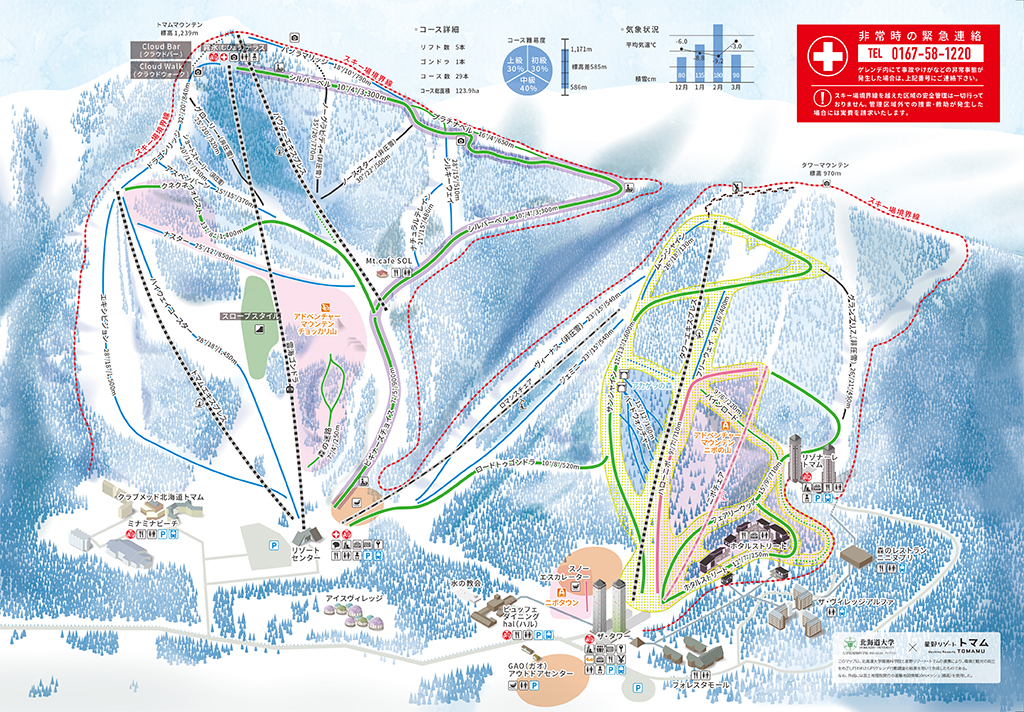
(right is Tower Mt. left is Tomamu Mt.)
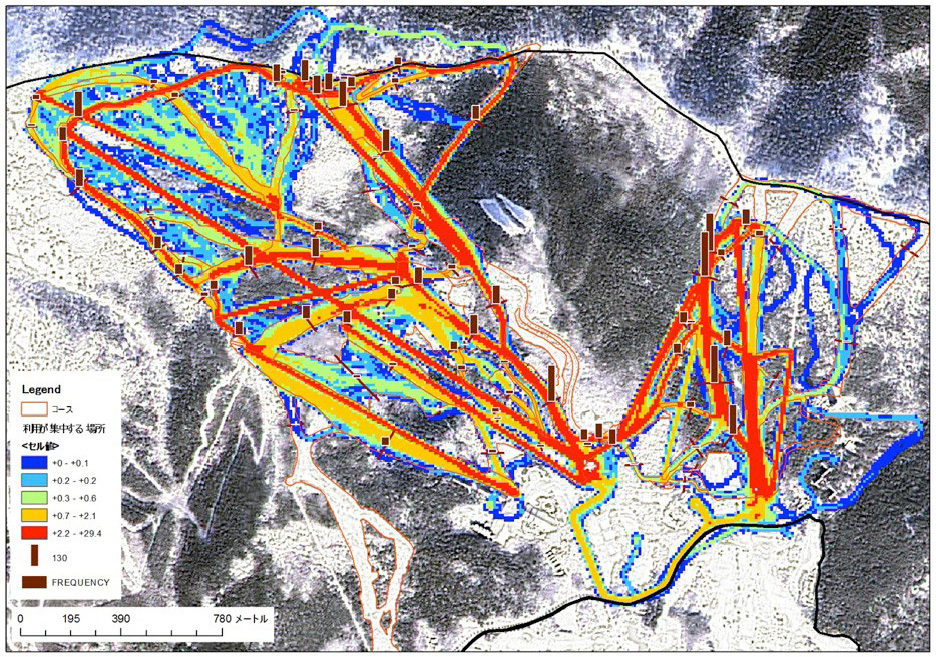
Use GPS data to change the route and greatly improve convenience!
A resort center with schools and rentals has long been located on Tomamu Mountain, but at the time, beginners could not access the resort center by lift. The fact that it was inconvenient to take the bus to get around was something that we were aware of, as comments were made in the guest satisfaction survey. Under such circumstances, this survey revealed for the first time that there are more beginners and intermediate skiers skiing Tower Mountain.
The data made the problems we were facing visible, and we became convinced of what we were thinking at the site, and it was a powerful boost to improving the usage environment. Moved facilities such as nurseries, schools, and rentals to Tower Mountain. We were able to greatly improve convenience by matching the guest's flow to the actual movement.
Since then, improvements have been made repeatedly when the lift was replaced and when the slopes were created, and now even beginners can use the lift to access the resort center. Needless to say, the survey data from that time was put to good use.
Eliminate dissatisfaction by sloping the long flat part at the bottom!
GPS can also measure speed, so you can see which part of the slope is skied at what speed from the ski log. From the in-house system for measuring customer satisfaction, the most dissatisfied user satisfaction survey at the time was that the board stopped on the long flat part at the bottom of the slope.
You can maintain your speed by creating waves or adding slopes to areas where your speed is slowing down. Therefore, based on the data of the runway log, we added a slope in civil engineering work to the part where the train stalled. This dramatically improved the problem, leading to the elimination of user dissatisfaction. Civil engineering work is expensive, so the data was very useful in making that decision.
Fixed level signboard. Allowing for a wide range of enjoyment
The analysis map below shows the amount of course skiing by level, but when comparing the skill level and the skiing log, even on the course that is said to be "advanced", intermediate level people can ski normally. I found out.
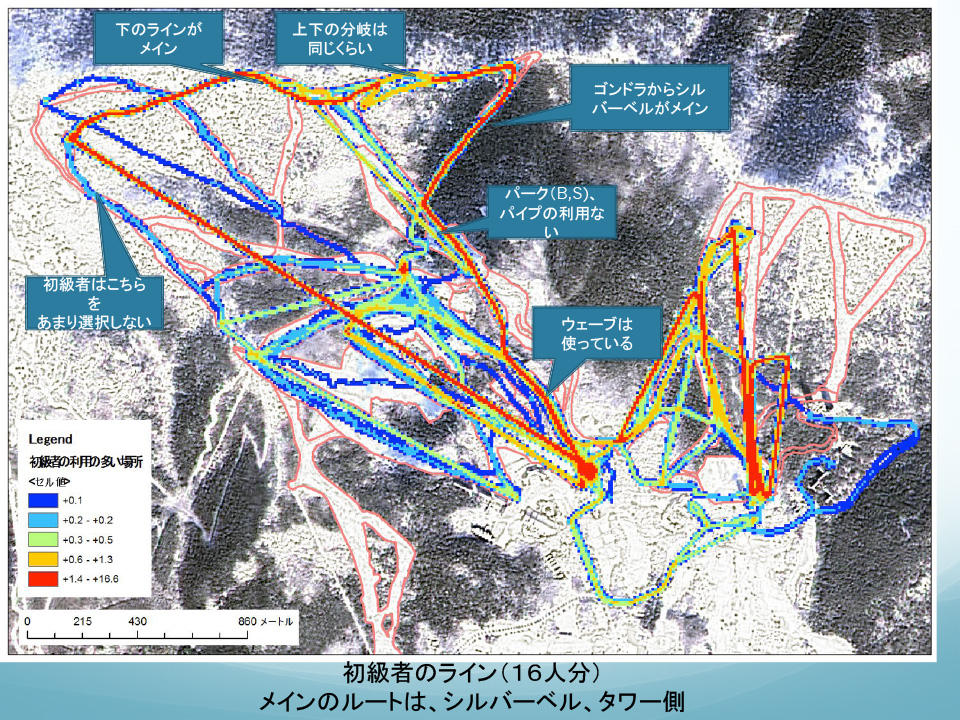
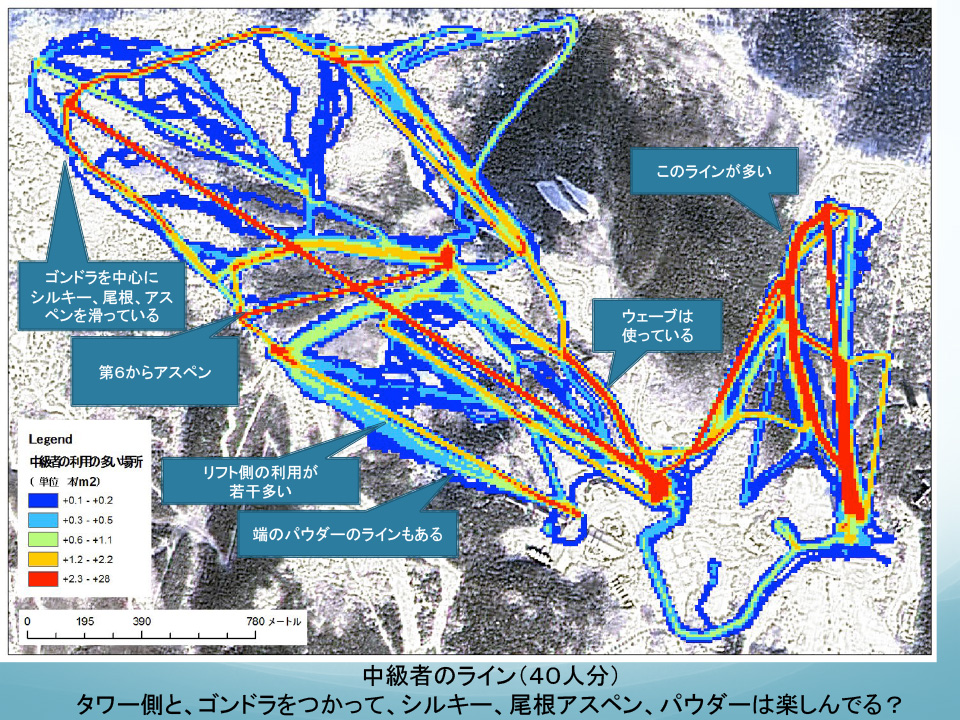
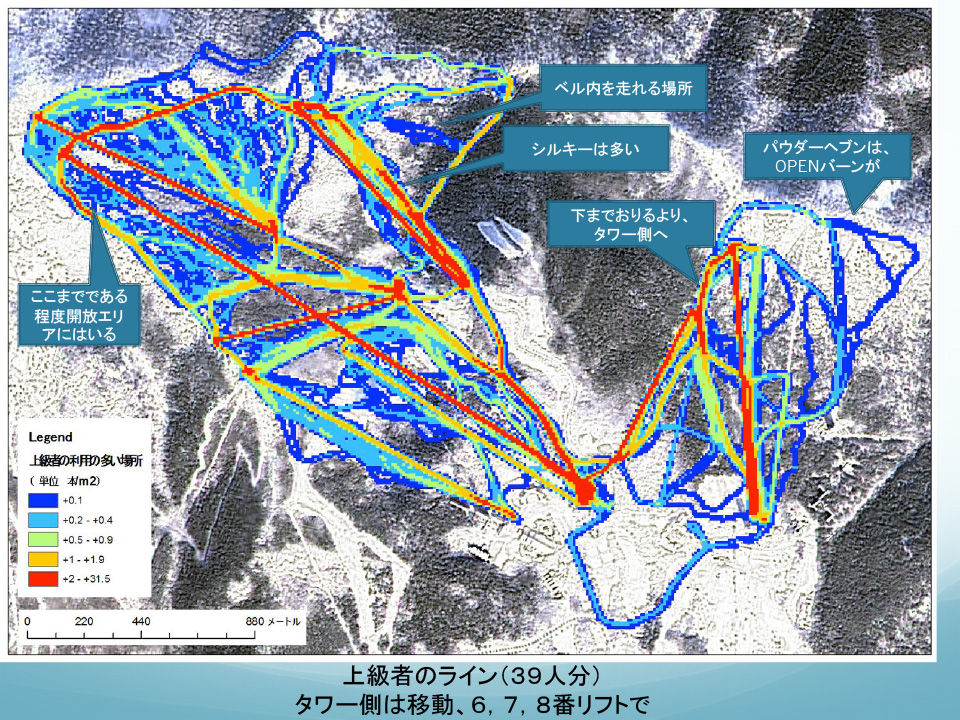
If you specify a level, the choices that users can enjoy are narrowed down. Therefore, we reviewed the display of the signboard so that users can enjoy it in various ways.
This is another improvement made possible by the availability of analytical data.

The slope map was completely remade from research findings
One of the major results of this research was the complete redesign of Tomamu's slope map. In the past, it was difficult to understand the signboards and map expressions on the slope maps, and it was difficult to understand the connectivity between courses.
However, by tracking the trajectory of the slide with GPS data, it became clear which fall line the user was skating. By doing so, I was able to demonstrate efficient lift rotation and course routines.
The data could be used not only to provide course connection information, but also to express the attractiveness of the course. You can see the gliding speed and the size of the turn from the GPS. How about making the map itself easy to understand, exaggerating it a little and making it look like it's fun? thought.
At that time, we had a thorough discussion with the people involved in order to include in the map how we could guide people there.
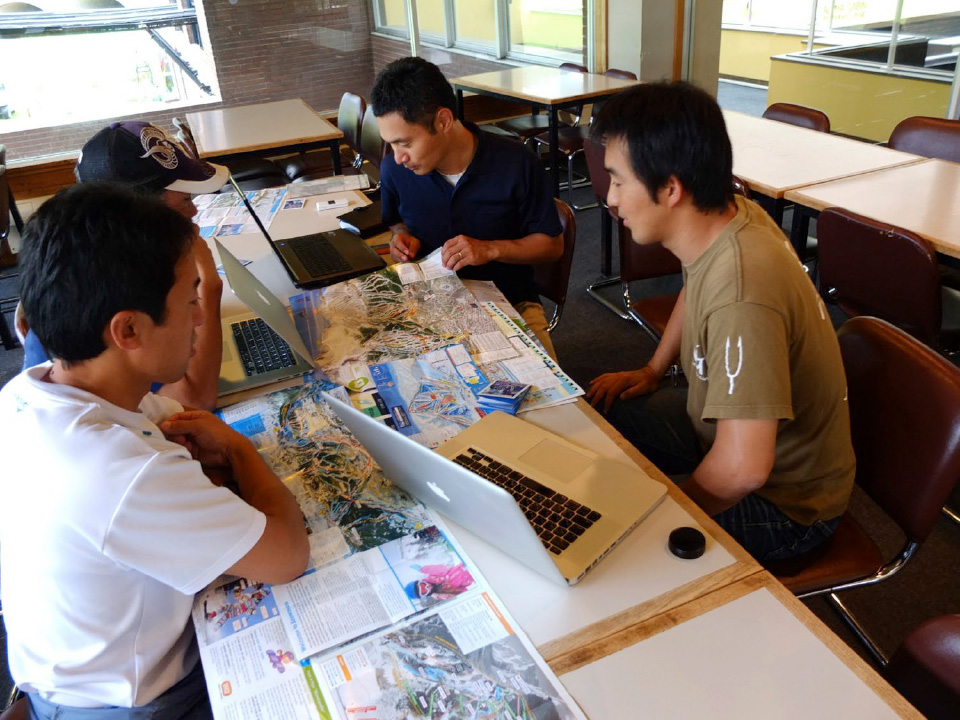
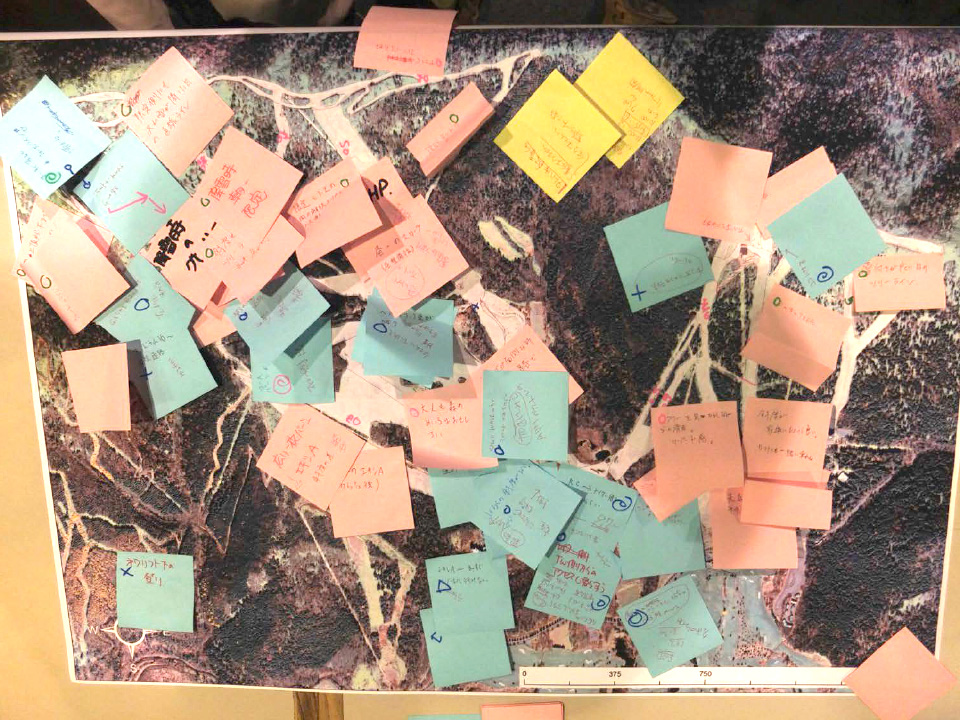
By the way, on the old slope map, Tower Mountain looked very small.
With this, the actual scale feeling and the sense of reality of sliding down are thin, and the course does not look attractive. Comparing the two maps, before and after are quite different. The impression changed to a large, three-dimensional view of Tomamu Mountain. "This map would not have been possible without GPS data," said the person in charge.
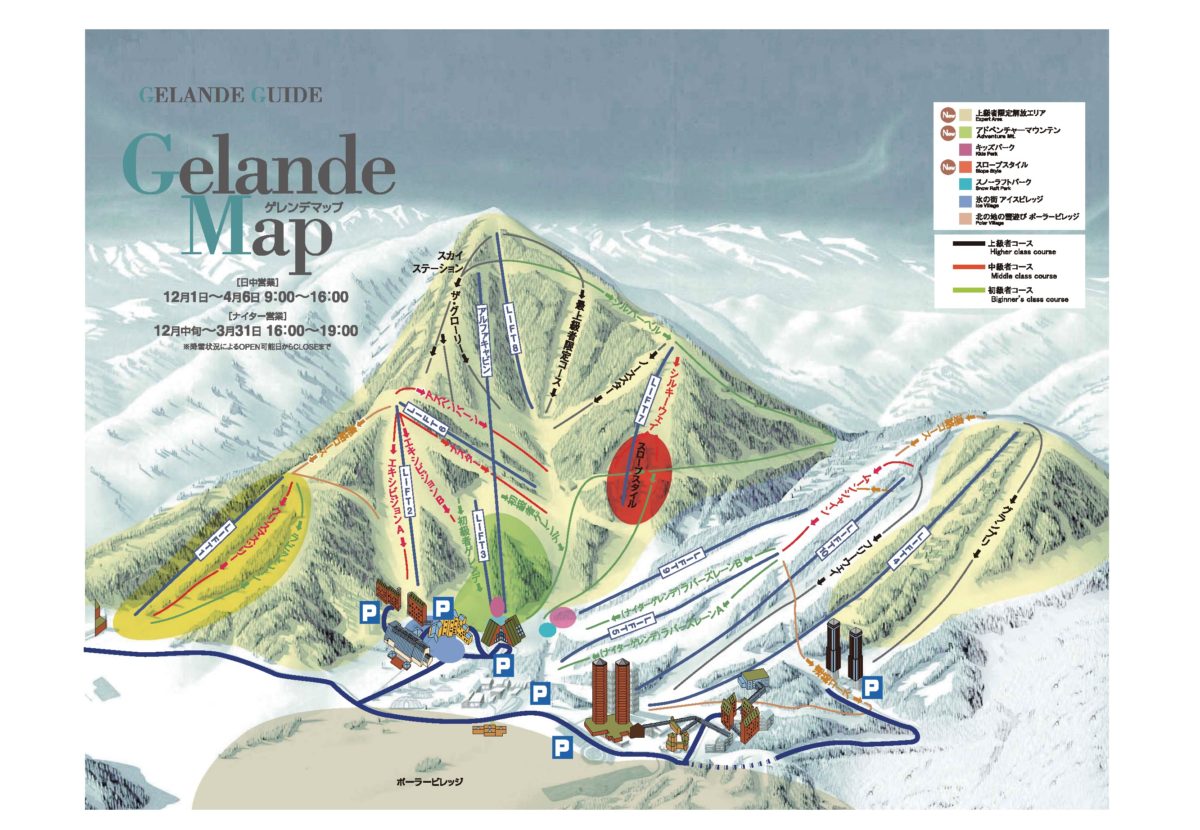

If you look at the slope map of Hoshino Resorts Tomamu, which is still available on the official website today, it is based on what Mr. Yoshimura was involved in at the time.
Navigation is important to maximize user enjoyment. For that, it is essential to review the course map and the signboard. By using GPS and GIS, we were able to visualize and share the "knowing" and "feeling" of users and field staff, and we were able to boost their actions. It was one of the great research results.
What we learned from research using a snow compactor
Surveys using GPS were extended to snow groomers. Equipped with GPS on 6 snow groomers to collect driving logs for the day. We collected data such as how much snow was compacted on which course, which part of the course was compacted, and the time it took to compact the snow. What did you find out?
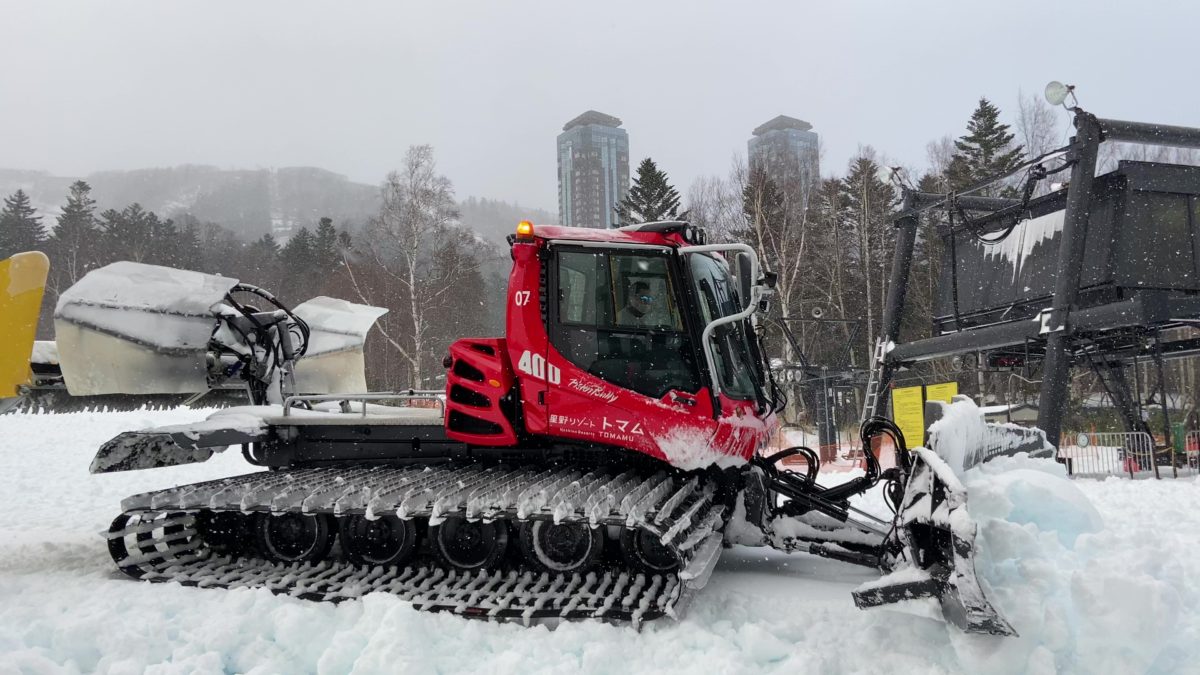
Increased attractiveness of skiing with compacted snow and efficient snow compactor operation

Analysis of the data revealed that they had been overcompacting snow where they didn't need it, wasting fuel and time. As a result of this research, operators commented that they were able to finish work about 30 minutes a day earlier than before, which contributed greatly to improving work efficiency.
Yoshimura found the following possibilities in this research.
●Search for the ideal snow grooming line that seems to be efficient
⇒ Avoid unnecessary grooming, which will lead to time saving, fuel cost reduction, and labor reduction
● Find places where snow does not need to be groomed
⇒ User slip Groomed snow according to the direction.
If you can leave uncompacted snow for powder lovers and create a line suitable for intermediate and advanced skiers, it will increase the appeal of skiing for skiers and lead to the effect of attracting customers . Build a navigation system
⇒ Efficient running method It would be nice if there was a system that could calculate and check it like a navigation system in a snow groomer.
It also helps fill the skill and experience gaps of operators of snow groomers, and reduces the cost and time spent on training new employees
. The CO2 reduction effect can be calculated from the fuel cost for compacted snow. Efficient operation of snow groomers can reduce the amount of CO2 emitted by snow groomers.
This study was conducted about 10 years ago. It feels like it was ahead of its time, but there are many things that are still relevant today. Mr. Yoshimura said in this way.
“As the population of skiers and snowboarders is declining, the only things that ski resorts can do to improve the enjoyment and satisfaction of skiing itself are compacted snow and course construction. I think it's important to create a course that puts everything into it. For example, I think it's attractive to build a course that encourages improvement, or a course that pursues fun and comfort.
As an extension of that, I want to promote forest thinning. Thinning can promote the growth of the entire forest and increase the amount of CO₂ absorption. Advance the necessary forest management from skiers and snowboarders. At the time, I didn't think much about CO2, but it would be fun to make something out of thinned wood together with users. I think there is also communication between ski resorts and users. In the future, I would like to conduct research that matches the needs of the present age, such as SDGs and CSV.”
Hoshino Resorts Tomamu has been working on CSV management from early on. Such research cases may provide hints for CSV management and SDGs initiatives that resorts are aiming for in the future.
*CSV is an abbreviation for "Creating Shared Value", which means "creation of shared value". By incorporating CSV into management and marketing activities, it is regarded as a new method for companies to succeed economically. An important aspect of CSV is the ability to balance social contribution and corporate profits by solving social issues through our core business.
the person who taught me

FiveQuesitionZ LLC Representative Partner
Rakuno Gakuen University Specially Appointed Associate Professor Nobuhiko Yoshimura
Born in Fukuoka Prefecture. Representative employee of FiveQuestionZ LLC, Specially Appointed Associate Professor of Rakuno Gakuen University. He specializes in utilizing spatial information technology such as remote sensing, GIS, and GPS. He holds a PhD (environmental science). He will advance technical assistance for sustainable forest management in developing countries, including a sustainable forest management project in the Solomon Islands. Snowboarding is my life's work. He lives very close to a ski resort and skis almost every day.
Interview cooperation: Hoshino Resort Tomamu

